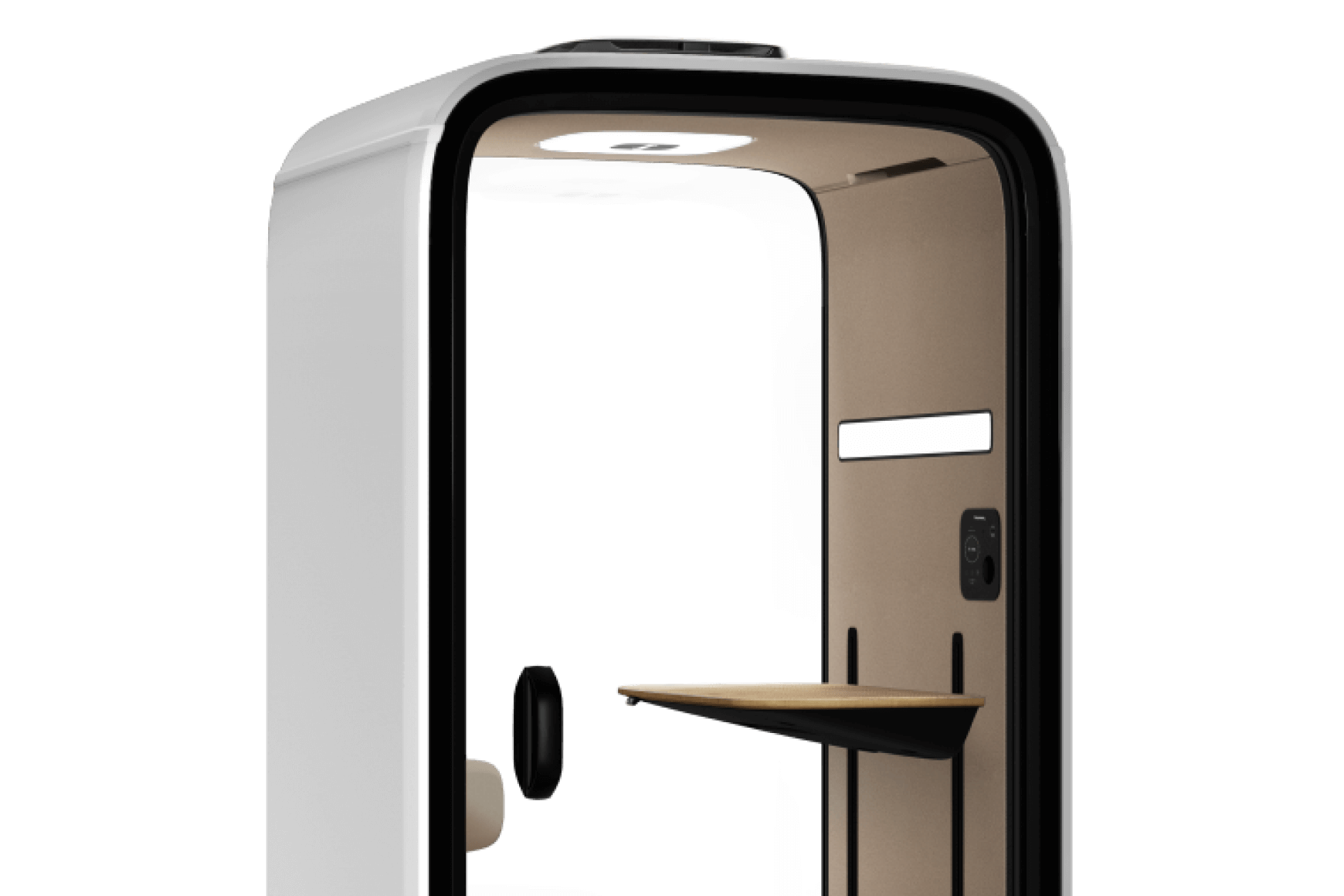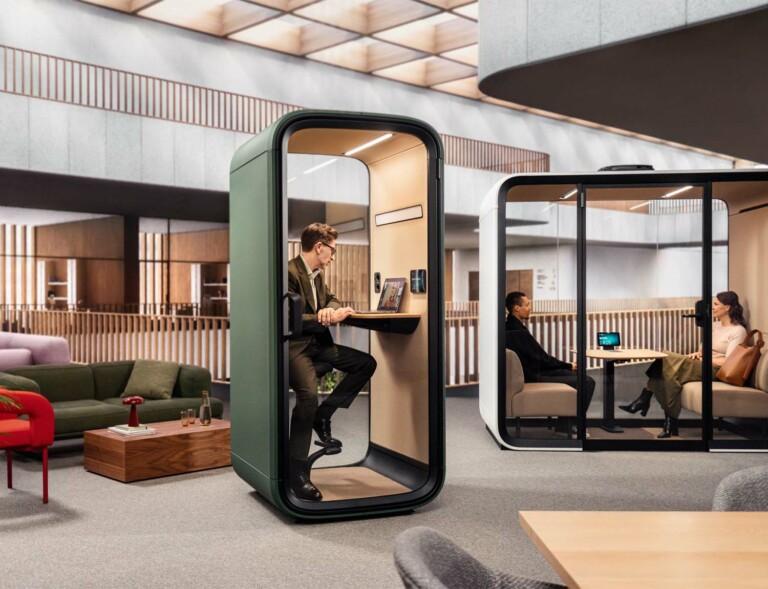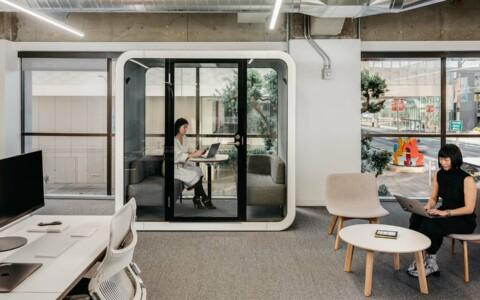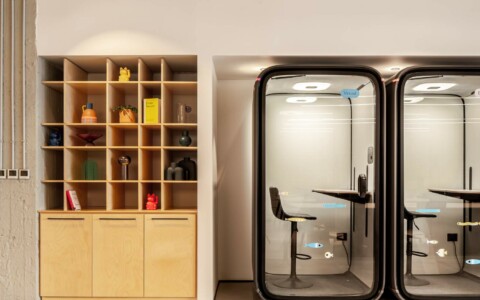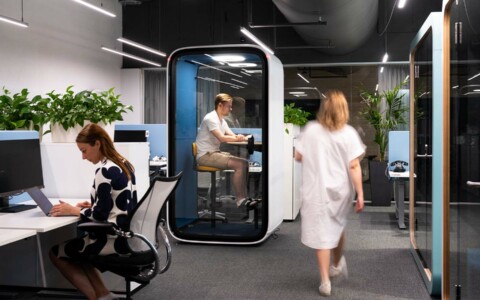Hybrid work is business as usual in most offices since companies were forced to introduce remote work during the first years of the 2020s. According to Gartner, 39% of knowledge workers globally will have adopted a hybrid working model by the end of 2023, with only 9% working fully remotely. Although hybrid work brings some challenges, a well-planned hybrid office design helps combine both in-office and remote work while getting the benefits of both.
Key highlights
- A hybrid office is a workplace where employees spend some days in person at the office while working remotely for the rest of the week.
- The benefits of hybrid work include improved work-life balance, productivity, and job satisfaction, as well as reduced distractions and work stress.
- The office should be designed to accommodate both in-person and remote workers to reap the benefits of hybrid work.
What is the hybrid workplace?
Although there is no fixed definition for what constitutes a hybrid office, it usually refers to workplaces where work takes place remotely for some days of the week while other days are spent in person at the office. In a hybrid workplace, some employees may be working fully remotely, while those who prefer to work at the office come there on most days.
Most hybrid workplaces have established their own rules and conventions for working remotely. For example, hybrid workplaces can have designated workstations for each employee or use so-called hot desks that can be used for the duration of the workday. In the end, a successful hybrid office space caters to the needs of all employees, including remote workers, and their work.
In addition to the design of the physical office space, companies should establish clear policies for hybrid work. Individual teams can also agree on their own hybrid work schedules so that everyone comes to the office on the same days. One way to ensure the office is equipped for hybrid work is to provide employees with flexible workspaces and meeting rooms, such as soundproof Framery office pods and booths.
Explore all Framery pods
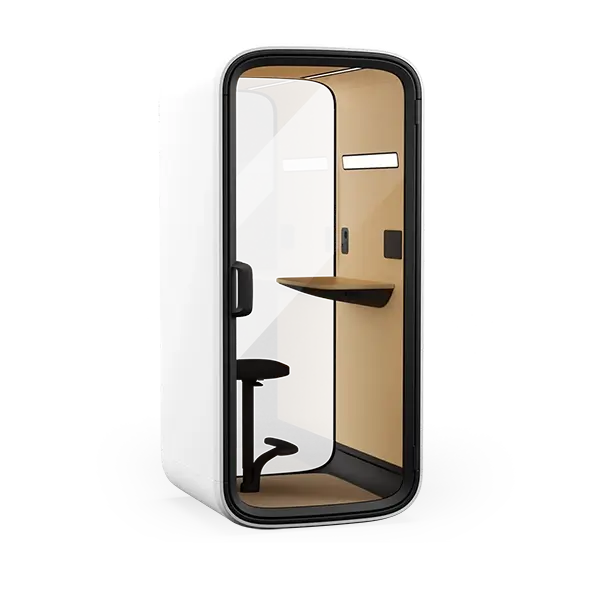
What are the benefits of hybrid work?
Hybrid work has a number of benefits for both employees and the hybrid workplace as a whole. These include increased flexibility in scheduling the workday, better work-life balance, and more economical use of office space.
When employees do not need to arrive at the office every day, they save time that would otherwise be spent commuting. Hybrid working also improves productivity when employees are allowed flexible work according to their preferences and life situations.
According to Gallup data from 2023, 29% of hybrid employees would be extremely likely to look for other job opportunities if their employer decided not to offer opportunities for remote work.
The share of fully remote workers who thought the same was 61% in 2023. Therefore, offering remote and hybrid work options is definitely in companies’ interest as employees increasingly demand flexibility.
According to the same data by Gallup in 2023, more than half of remote-capable workers in the US either expect or prefer hybrid work. As Gallup puts it: “To remain competitive, organizational cultures need to reflect that they provide what employees are looking for.”
Alternating between in-person and remote work
Most office workers prefer having the opportunity to decide between working from home or at the office for most of the week. Instead of the office being a place where the employees have to go day after day, it can be an environment they get to use for specific occasions and tasks. The hybrid office can also accommodate people who never work in person. This allows companies to hire talent regardless of their physical location.
Establishing a better work-life balance
Finding the right balance between remote work and going to the office is crucial for a hybrid office. The hybrid model of work also helps employees find a balance between their work and life outside of the work context. As anyone with children and other large responsibilities besides their job can tell you, finding enough time in the day can be challenging. However, with the freedom of hybrid work, employees can go to the office when it is most convenient for them and their non-professional life.
Increased productivity and employee satisfaction
By improving employees’ quality of life, a hybrid office benefits productivity and, as a result, the bottom line. When employees are offered variety and the freedom to choose where they wish to work, their quality of work and productivity improve.
Working in a soundproof Framery office pod helps increase productivity by allowing employees moments of recovery throughout the workday. This improves their quality of work and work-life satisfaction.
A report by Microsoft in 2021 stated that the future of work is hybrid and that “flexible work is here to stay”. If companies want to retain their employees and attract new talent, they need to be prepared for the needs of an open office. However, many workplaces are not fully prepared for hybrid work.
Better use of office space
The office can be designed more freely when employees work some of the time at home rather than five days a week on-location. Fixed workstations are not a necessity in a hybrid office. Instead, employees can decide where they want to work at the office. Combined with analytics on office space usage, companies can optimize their use of office space for the needs of a hybrid workforce and downsize or redesign their existing offices if needed.
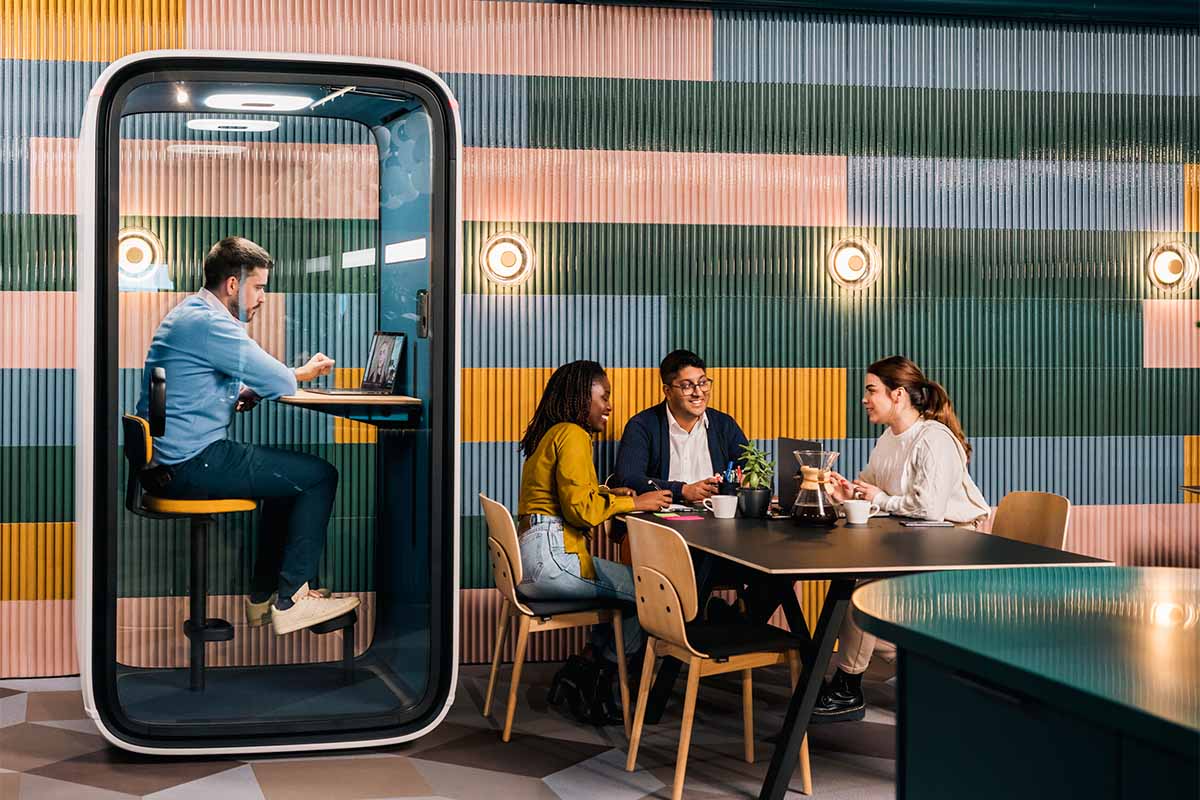
Accommodating remote employees
Team members can work effectively and connect even when some are working from a remote location. This fosters collaboration and trust among employees but also helps to attract top talent for the employer.
Workplace flexibility and the option to work remotely are deal breakers for many office workers. Whether or not their current or potential employer allows hybrid work will influence their decision-making when choosing where to work. Dr. John W. Mitchell states in a 2024 Forbes article that 42% of remote workers will look for a new employer if their current company does not offer long-term remote work options.
Hybrid collaboration between colleagues can be hindered by issues with technology or the lack of meeting rooms equipped to accommodate remote participants. Framery has collaborated with Logitech to offer the perfect setup for videoconferencing and hybrid meetings.
Optimizing the workplace for hybrid work
A hybrid workplace is one where the number of employees working in person fluctuates from day to day. Therefore, there is a danger that the office space is either underutilized or overutilized, or the need for available office space and meeting rooms is not constant on all days of the week. Office analytics and smart office solutions provide actionable insights for operating a hybrid workplace.
The Framery Connect sensor allows you to gather occupancy data from every workspace in the office and optimize the office for the needs of both the company and employees. In addition to valuable office usage data, the Framery app allows employees to find and book available meeting rooms or office pods.
Explore Framery Connect
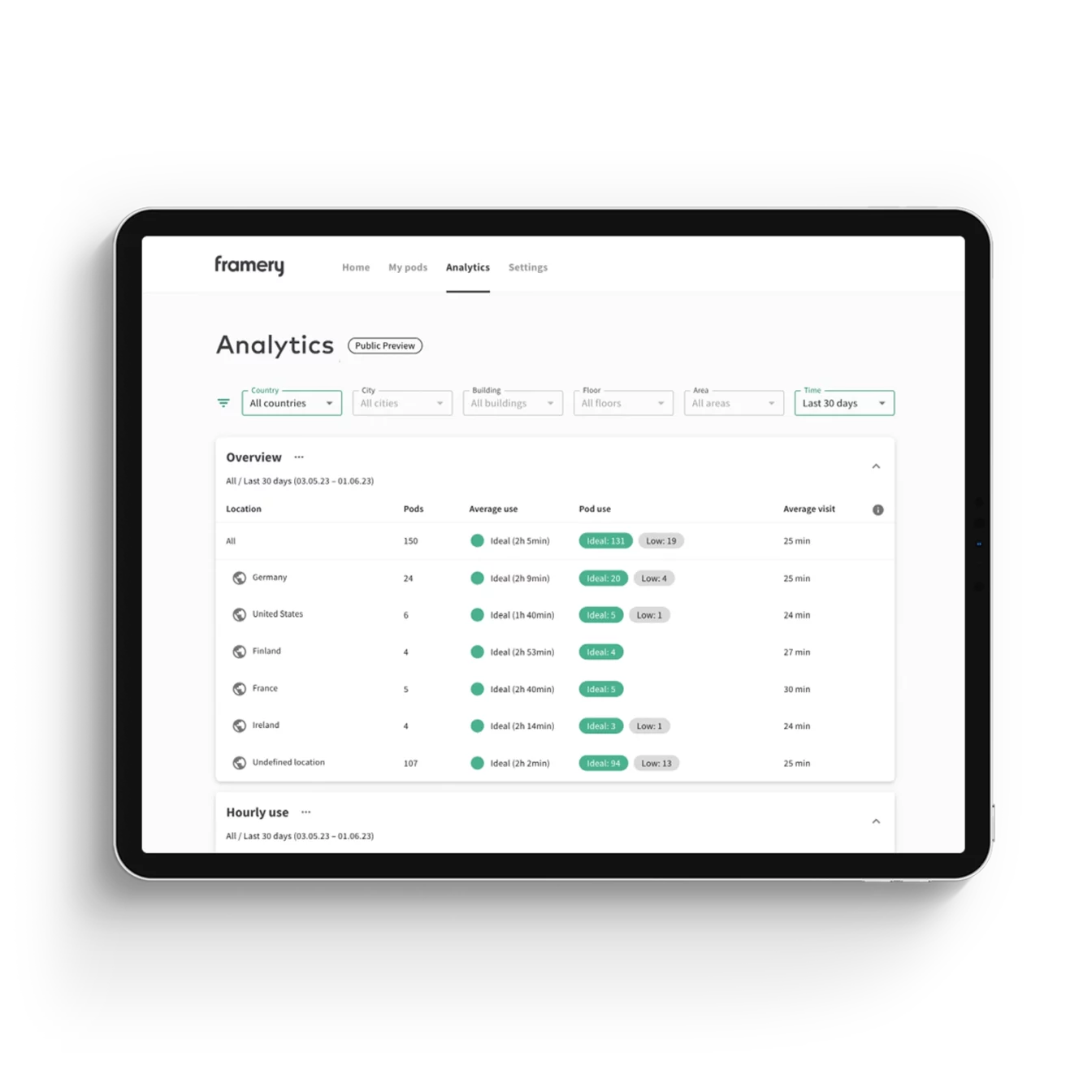
Creating a successful hybrid workplace with Framery
In a hybrid office where in-person and remote work converge, the importance of collaboration and good hybrid office design cannot be overstated. However, the hybrid office only works if designed to fit the purpose, with the right tools and spaces for video conferencing, in-person collaboration, and focused work. To get the full benefit of the hybrid work model, Framery office pods help by connecting in-office employees with their remote colleagues.
Framery office pods are the perfect companion to today’s hybrid workplace. Connect remote workers with the people at the physical office by providing enough soundproof office booths for a single person, such as the Framery One. Larger meeting pods, such as the Framery 2Q, are equipped to fit a small team of four to six people, compatible with videoconferencing technology.
FAQ
What is a hybrid office?
A hybrid office combines remote work and working in person at a physical office. Some companies have their own hybrid work policies and require workers to come to the office on a minimum number of days every week. Meanwhile, if their employees prefer to work remotely most of the time, other companies are more flexible in their stance to hybrid work. When designed to cater to the needs of both remote and in-person workers, a hybrid office can offer the best of both worlds.
What does a hybrid office look like?
The number of employees present in a hybrid office can change from day to day. As a result, the hybrid office should be flexible and allow different spaces for a variety of tasks and meetings. Additionally, hybrid offices may lack designated workstations. Instead, employees can work where they want at the office (also known as hot desking), for example, if they show up at the physical office only every now and then.
What is the difference between remote and hybrid work?
Remote employees work most or all of the time outside a physical office space, such as their home or remote workspace. This kind of work is best suited for employees whose work is not dependent on their location as well as employees living abroad or far from a physical office. Hybrid work combines remote and in-person work at the office. In a hybrid work schedule, employees can come to the office, for example, two or three times a week and work from home on other days. Many companies have hybrid work policies dictating how often or when employees should come to the office.
What are some challenges of hybrid work?
In addition to the many benefits, operating a hybrid office comes with its own challenges for individual workers and the company. According to Gallup survey data from 2023, the most common challenges of hybrid work according to hybrid employees were less access to work resources and equipment, feeling less connected to organizational culture, decreased collaboration, and impaired working relationships with coworkers. To combat these challenges, hybrid offices must be designed with the requirements of hybrid and remote work in mind.
What are the benefits of hybrid work?
Hybrid work can improve both the well-being and productivity of employees as well as the bottom line for their employer. The benefits for individual workers stem from the flexibility of working remotely at home for at least part of the time. As a result, hybrid workers experience better work-life balance and less burnout or fatigue. Additionally, employers in a hybrid workplace can optimize the use of office space and save on real estate expenses.
Get started today
Design your own
Customize your pod and make it your own with our pod configurator.

Get a quote
Find your nearest representative to hear about pricing and get a quote for your project.
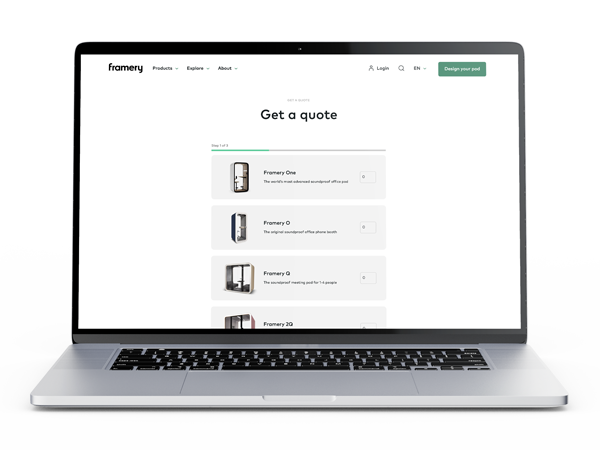
Try a pod
Visit one of our global showrooms to try any of our Framery pods for yourself.
